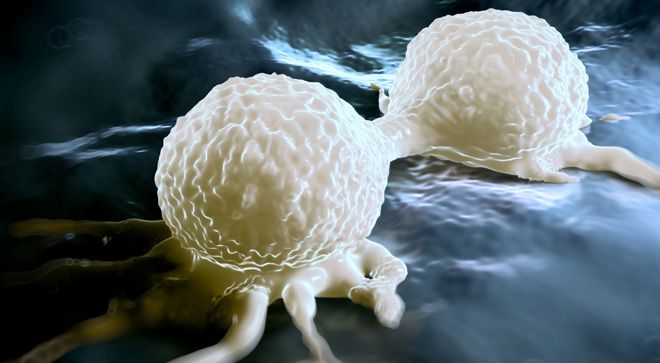Article
Perjeta Combination Granted FDA Approval for Breast Cancer
Author(s):
The FDA has approved Perjeta (pertuzumab) in combination with Herceptin (trastuzumab) and chemotherapy as an adjuvant treatment for patients with HER2-positive early breast cancer at high risk for recurrence, based on findings from the APHINITY trial.
The FDA has approved Perjeta (pertuzumab) in combination with Herceptin (trastuzumab) and chemotherapy as an adjuvant treatment for patients with HER2-positive early breast cancer at high risk for recurrence, based on findings from the APHINITY trial.
In the phase 3 trial, adjuvant treatment with Perjeta, Herceptin and chemotherapy demonstrated a three-year invasive disease-free survival (iDFS) rate of 94.1 percent versus 93.2 percent for those who received Herceptin plus chemotherapy and placebo. This represented a 19 percent reduction in the risk of developing invasive disease or death. The 4-year iDFS rates were 92.3 percent versus 90.6 percent, respectively.
The FDA's decision also transitioned an accelerated approval granted to Perjeta in September 2013 to a full regulatory approval for use of the agent in combination with Herceptin and docetaxel for patients with HER2-positive, locally advanced, inflammatory, or early stage breast cancer. Those receiving the Perjeta regimen in the neoadjuvant space can effectively continue both HER2-blocking agents following surgery for a full year of treatment.
“The goal of treating breast cancer early is to provide people with the best chance for a cure. While we come closer to this goal with each advance, many people still have a recurrence and progress to the metastatic stage,” said Sandra Horning, M.D., chief medical officer and head of Global Product Development, said in a statement. “Today’s approval of Perjeta means people with HER2-positive early breast cancer at high risk of recurrence have a new, clinically meaningful treatment option to reduce the chances of their disease returning.”
The phase 3 double-blind, placebo-controlled APHINITY trial randomized 4,805 patients with operable HER2+ early (T1-3) breast cancer in a 1-1 ratio to adjuvant treatment with Herceptin plus chemotherapy (anthracycline or non-anthracycline-containing regimen) with or without Perjeta. Patients had undergone mastectomy or lumpectomy. Overall, 63 percent of the participants had node-positive disease, and 36 percent had HR-negative disease.
The Perjeta arm received six to eight cycles of chemotherapy with Perjeta and Herceptin, followed by Perjeta and Herceptin alone every three weeks for a total of one year of therapy. The control arm received the same treatment schedule, with placebo replacing Perjeta.
At the end of adjuvant chemotherapy, patients could start receiving radiotherapy and/or endocrine therapy. The primary endpoint was iDFS, with secondary endpoints including cardiac and overall safety, overall survival, disease-free survival, and health-related quality of life.
The study met its primary endpoint by exceeding a preset threshold for reducing the risk of an iDFS event. The Perjeta -containing regimen reduced the risk of developing invasive breast cancer by 19 percent. After a median follow-up of 45.4 months, 7.1 percent (171 patients) in the Perjeta group had developed invasive breast cancer, compared with 8.7 percent (210 patients) in the standard therapy group.
The benefit was more pronounced among higher-risk subgroups, with the curve widening over time. At three years, the iDFS rate for patients with node-positive disease was 92.0 percent with Perjeta versus 90.2 percent with standard therapy. At 4 years, the rates were 89.9 percent and 86.7 percent, respectively.
For participants with hormone receptor (HR)—negative disease, the three-year iDFS rate with Perjeta was 92.8 percent compared with 91.2 percent in the control group. At four years, the rates were 91.0 percent and 88.7 percent, respectively.
The number of patients needed to treat to achieve benefit was 112 for the study overall, 63 in the HR-negative subgroup, and 56 in the node-positive subgroup.
The addition of Perjeta did not significantly increase cardiotoxicity. The primary cardiac endpoint was heart failure, defined as New York Heart Association class 3/4 failure plus a drop in left ventricular ejection fraction (10 percent or more from baseline and up to 50 percent), or cardiac death. Primary cardiac events were reported in 17 patients (0.7 percent) in the Perjeta -containing arm versus 8 participants in the standard therapy group (0.3 percent). The primary cardiac endpoint also included cardiac death, and the 17 and 8 primary events includes the two cardiac deaths in each arm.
Diarrhea of grade 3 or higher severity was more common with the Perjeta -containing therapy, affecting 9.8 percent of patients in the safety analysis versus 3.7 percent of those who received standard therapy. The incidence of diarrhea occurred predominantly during chemotherapy and more frequently among patients who were administered TCH.




